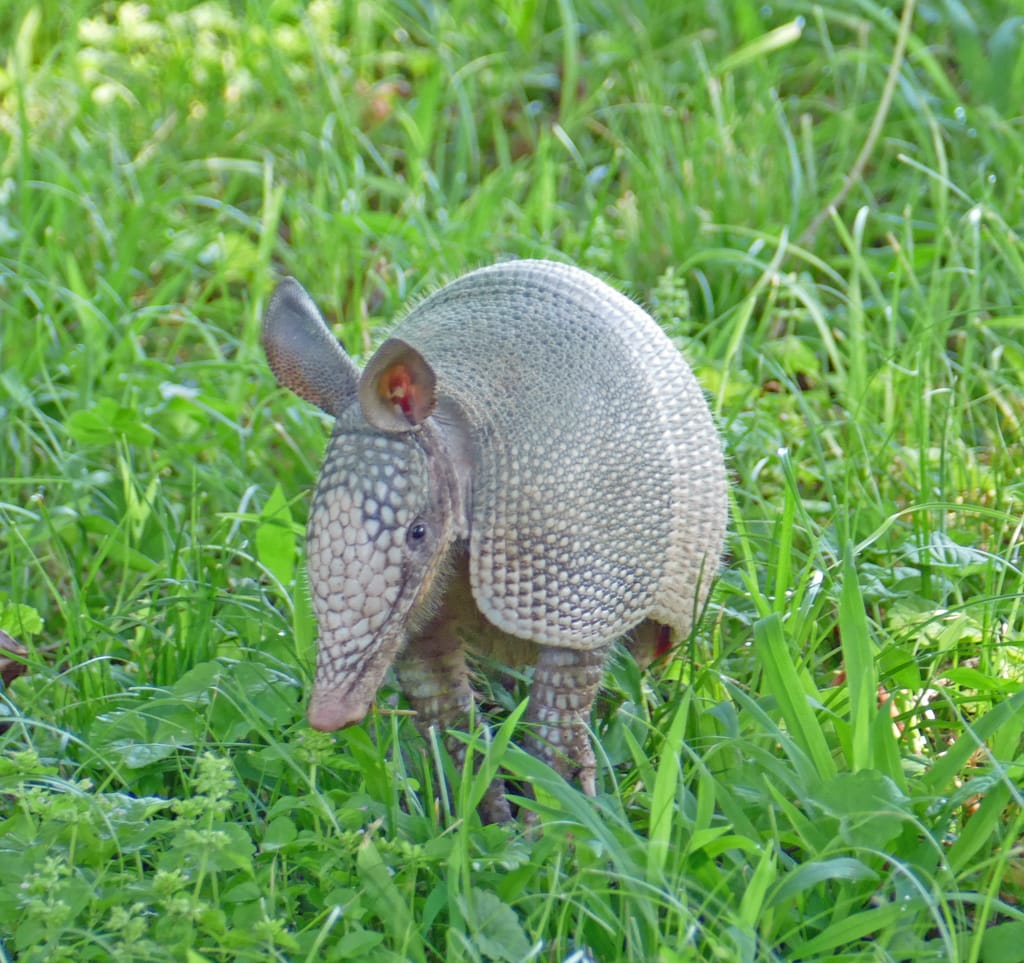Armored Newcomers: Getting to Know Georgia’s Armadillos
Georgia’s wildlife scene is changing, and leading the charge is a peculiar creature with an armored shell: the armadillo. While not native to the Peach State, these fascinating animals are becoming increasingly common, prompting questions about their behavior, their impact on the environment, and how Georgians can coexist with their new neighbors.
The Long March East: How Armadillos Conquered Georgia
Originating in Central and South America, armadillos have been steadily expanding their range northward for decades. This expansion is likely due to a combination of factors, with climate change being a significant driver. Milder winters, particularly in states like Georgia, have made it possible for armadillos to thrive further north than ever before.
The nine-banded armadillo (Dasypus novemcinctus) is the lone species that has made Georgia its home. These adaptable creatures are found in nearly every county, though they tend to avoid mountainous regions. With a landscape that offers a readily available smorgasbord of insects and a climate that suits their needs, Georgia has inadvertently rolled out the welcome mat for these armored adventurers.
Digging In: The Impact of Armadillos on Georgia’s Ecosystems
While their presence adds a unique dimension to Georgia’s biodiversity, armadillo activity comes with both benefits and drawbacks. On the one hand, they act as natural pest control, their insatiable appetites keeping insect populations in check. Their digging, while potentially destructive to gardens and lawns, can also help aerate the soil, providing a boost to plant life.
However, their burrowing behavior can disrupt delicate ecosystems, potentially impacting native plants and animals. Their fondness for raiding turtle nests poses a threat to already vulnerable turtle populations. Furthermore, armadillos have been linked to the transmission of leprosy to humans, raising public health concerns, although the risk of infection is considered to be quite low.
Coexisting with Armadillos: Tips for Peaceful Relations
As armadillo encounters become more frequent, it’s crucial for Georgians to learn how to coexist with these armored newcomers. Understanding their behavior and taking preventive measures can help minimize potential conflicts.
Deterring Garden Diggers:
- Fencing: Install sturdy fences that extend at least two feet above ground and six inches below to prevent armadillos from digging under.
- Repellents: Using natural repellents, such as cayenne pepper or vinegar, around gardens can discourage armadillos.
Safety and Precautions:
- Avoid Handling: Never handle armadillos directly, as they can carry diseases.
- Seek Medical Attention: If you are bitten or scratched by an armadillo, consult a doctor immediately.
Looking Ahead: Research and Conservation Efforts
Scientists are actively studying armadillo populations, their ecological impact, and the potential risks associated with their expanding range. This research is crucial for informing conservation efforts and mitigating any negative consequences.
Understanding the complex relationship between armadillos and their environment is key to ensuring a harmonious balance. By employing responsible practices and staying informed about these fascinating creatures, Georgians can help protect both their property and the state’s unique biodiversity.
Can Armadillos Live in Georgia?
Yes, armadillos can and do live in Georgia. In fact, the state is considered a hotspot for these armored creatures! The combination of Georgia’s mild winters, abundant food sources, and suitable habitats has allowed armadillos to thrive. While they’re found in nearly every county, they’re particularly abundant in central and southern Georgia, where the climate and terrain are ideal for their burrowing habits.
What US state has the most armadillos?
While armadillos are found throughout the southern United States, Georgia is believed to have the highest density of these shelled creatures. The exact reasons for this are complex and likely involve a combination of factors:
- Ideal Climate: Georgia’s mild winters and warm, humid summers create the perfect environment for armadillos to thrive year-round.
- Abundant Food: The state’s rich soil supports a vast population of insects, grubs, and other invertebrates, which form the bulk of an armadillo’s diet.
- Suitable Habitat: Georgia’s mix of forests, fields, and suburban areas offers plenty of places for armadillos to burrow and find shelter.
Where do armadillos live in the US?
Armadillos are primarily found in the southern United States, but their range is expanding northward. Here’s a general overview of where they’re commonly found:
- Southeast: This region is considered the heartland of the armadillo’s US range, with Georgia, Florida, Alabama, Mississippi, and Louisiana having particularly large populations.
- Texas and Oklahoma: These states are also home to vast numbers of armadillos, thanks to their suitable climate and habitat.
- Northward Expansion: Armadillos have been documented as far north as Virginia and are likely to continue expanding their range as temperatures warm due to climate change.
Important Considerations about Armadillo Habitats:
- Climate Change: As temperatures rise, armadillos are likely to continue expanding their range further north, potentially impacting new ecosystems and interacting with different species.
- Human Impact: The expansion of human development and habitat fragmentation can influence where armadillos can live and thrive. It’s essential to consider how human activities might affect armadillo populations in the future.
Did you know that the average lifespan of a bearded dragon in captivity can range from 8 to 10 years? Additionally, armadillos are not completely blind, but they do have poor eyesight.
- Star Ring Trends: Etsy vs Amazon - March 28, 2025
- Boost Pollinator Habitats: Baby Blue Eyes Sustainable Farming Guide - March 28, 2025
- Protect Big Black Bears: Effective Conservation Strategies - March 28, 2025

















2 thoughts on “Armadillos in Georgia: Understanding Their Habits, Impact, and Coexistence Strategies”
Comments are closed.